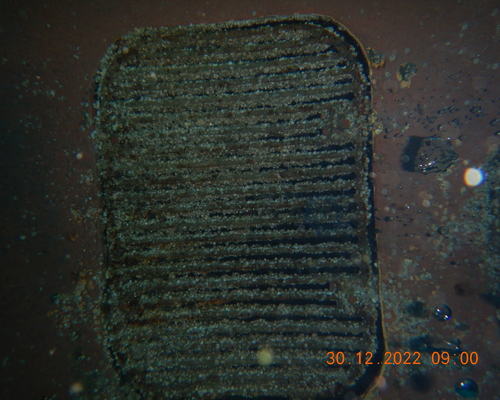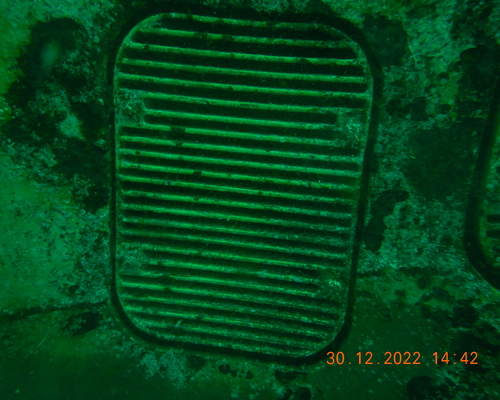Ship Husbandry > Underwater Sea Chest (External & Internal) Cleaning
Pacific Blu Subsea Services
Underwater Sea Chest (External & Internal) Cleaning
Before Cleaning


After Cleaning
The Function of Sea-chests
The sea-chest houses pipes to take in seawater and is a cavity built into a vessel’s hull to help increase the efficiency of pumping seawater into the internal pipework system to support the vessel’s engine, ballast, firefighting purposes and cooling- cooling for fresh water in central coolers, condensate (return steam) in auxiliary/atmospheric condensers, exhaust/gland/condensate steam from the turbines (cargo pumps), air conditioning/refrigeration condensers, lubricating oil/ stern tube oil/ intermediate shaft bearing oil and to produce fresh water in freshwater generators.
A sea chest has an external grid called ‘sea chest gratings’ prevent the passage of large objects such as trash, fish, nets, etc. Sea chests are mostly found in the engine room in the space between the side of the ship which is secured and protected by grids. The size, number, and dimensions of sea chests vary considerably with vessel size and type. The larger the vessel, the greater the demand for ballast water, the greater the size and number of sea chests. These systems usually consist of 2 sea suctions (one high and one low). They act as a type of gate so that seawater enters the engine room through pipelines & valves in a controlled manner. Then after the respective isolation valves, the seawater line is filtered to remove fishes, weeds, plankton, shells, etc. These organisms may cause fluctuations in the seawater pressure and erosion of the impeller of the seawater pumps.
Effect of fouling on sea chest suction
Biofouling is the process by which organisms gather on structures immersed in the aquatic environment. Once the structure is submerged organic and inorganic molecules are adsorbed onto the exposed surface, bacteria attach on to it. These organisms exude extra polymeric substances, forming a slime layer. Multicellular organisms settle to form a more structurally complex community, and as the complexity of biofouling increases, habitat is created for mobile organisms.
Anomalies include damaged / clogged gratings which can be commonly fouled with mussels, shells and other marine elements, result in an unbalanced and inadequate intake of water, not enough cooling of the main engine and other machinery, and overheating of critical components. Since the water entering the sea chests is used for cooling the main engine and other machinery as well as supplying water for the ship’s firefighting unit, this can be catastrophic for the ship.
Sea-chests’ protection by ICCPs
CCP systems normally consists of a pair of copper anodes and an aluminum or iron anode to counteract corrosion of the sea chest and internal pipes. Accompanied by reference cells installed in the vessel’s hull plating, these anodes are placed within the sea chest close to the seawater intakes. An electrical current is introduced to the anodes which causes the release of copper, aluminium, or iron ions into the seawater which are then dispersed throughout the sea chest and internal pipework. The concentration of ions released can be controlled by altering the voltage of the electrical current.
Sea-chests Cleaning
We undertake underwater sea-chests interior cleaning and underwater blanking of sea-chests. First the sea chest gratings are cleaned and taken up to the surface. After that, the divers enter into the sea chest and cleans the internals. When the process for underwater sea chests cleaning is completed the sea chest gratings are securely replaced in position. To make any other repair, temporary waterproofing of sea chests (plugging sea-chests) has to be made.


